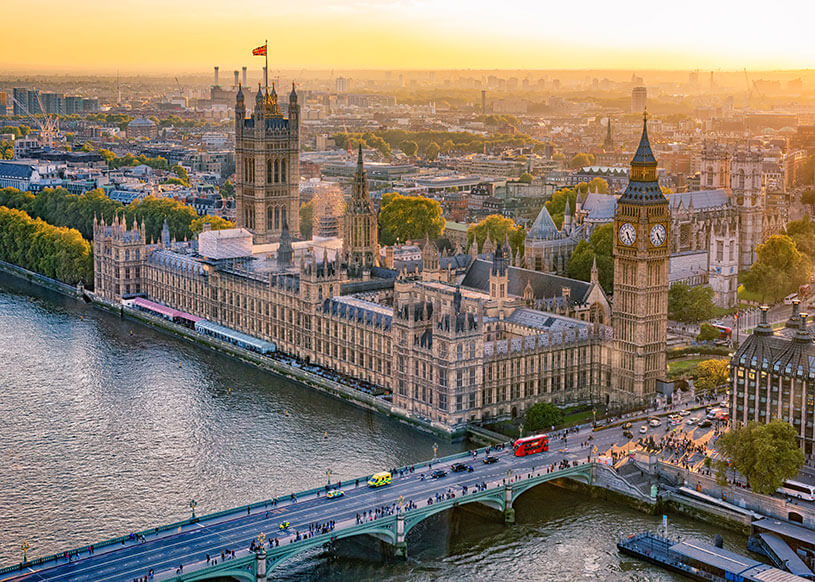The Autumn Budget 2025 included a range of tax rises in an attempt to close an estimated spending gap of around £30 billion.
The announcement, made by Chancellor Rachel Reeves alongside a forecast from the Office for Budget Responsibility (OBR), will see taxes increased by £26 billion over the next few years.
These tax increases will increase the tax burden to a record high of 38 per cent of Gross Domestic Product (GDP) by 2030-31, according to the OBR.
Although rumours of stamp duty reform didn’t come to pass, the fiscal update contains a range of measures that could impact landlords.
From higher property income tax rates to a new mansion tax, find out what the Budget means for your money and your property.
Rental income tax rates to increase from 2027
The government has announced that it will increase tax rates on property income such as rent.
This means landlords will pay two per cent more tax on rental income from April 2027.
The new tax rates for property income will be:
| Tax band | New property income tax rate |
| Basic rate (£12,570 – £50,270) | 22% |
| Higher rate (£50,271 – £125,140) | 42% |
| Additional rate (Over £125,140) | 47% |
Landlords will continue to pay normal income tax rates on their salary and other earnings. The two per cent rise will also apply to savings and dividends.
In its report, which was accidentally published hours before the Budget, the OBR said: “This successive eroding of private landlord returns will likely reduce the supply of rental property over the longer run.
“This risks a steady long-term rise in rents if demand outstrips supply.”
Income tax thresholds frozen for a further three years
The Treasury is also extending the freeze on income tax thresholds for a further three years until 2031-2032.
This is known as a ‘stealth tax’ as more people are dragged into higher tax brackets as wages rise. Income tax thresholds, which determine the amount of tax people pay, have been frozen since 2022.
Although the Treasury decided against increasing income tax rates, this measure marks a U-turn from last year’s Budget. At the time Reeves announced that income tax thresholds would rise again in line with inflation from the 2028-29 tax year.
Income tax rates at a glance
- 0 per cent on income up to £12,570 (personal allowance)
- 20 per cent on income between £12,571 and £50,270
- 40 per cent on income between £50,271 and £150,000
- 45 per cent on income above £150,000
New ‘mansion tax’ on most expensive homes
From April 2028, a new ‘mansion tax’ will be charged on the country’s most expensive properties.
The tax, which will be a surcharge on council tax, is estimated to raise £400 million in 2029-30.
The surcharge will be charged as follows:
£2,500 a year on properties worth £2 million and above
£7,500 a year on properties worth £5 million and above
The Treasury says the new tax will affect less than one per cent of property owners.
Tax-free ISA reform – new rules on investment allowance
Contrary to rumours, the Chancellor confirmed that the full £20,000 tax-free allowance for Individual Savings Accounts (ISAs) will remain. However, from 2027, £8,000 of the allowance will have to be used exclusively on investment.
Over 65s will keep the full cash allowance of £20,000.
Landlords won’t pay National Insurance on rental income
Despite speculation, the Treasury decided not to charge National Insurance on rental income.
It was strongly rumoured before the Budget that an eight per cent levy on rental income was being considered to raise an extra £2 billion-£3 billion a year.
However, higher tax rates on property income combined with the freeze on income tax thresholds will increase many landlords’ tax bills.
Stamp duty to remain for now
Despite strong rumours ahead of the Budget, stamp duty won’t be replaced with a national property tax.
The Guardian reported that the Treasury considered suggestions by the Onward think tank to remove stamp duty for property buyers and introduce an annual tax for sellers.
It was proposed that sellers would be required to pay an annual of 0.54 per cent on property worth over £500,000 and 0.81 per cent on properties worth £100,000 or more.
However, the current system will remain and landlords will continue to pay a five per cent stamp duty surcharge when they buy a rental property.
‘The biggest regulatory shift in a generation’
Julie Fisher, UK CEO of Simply Business, says: “UK landlords are facing the biggest regulatory shift in a generation as the Renters’ Rights Act and new tax processes are set to come into effect.
“More than a third (39%) are considering leaving the rental market completely within the next year as regulation changes create uncertainty for landlords serving almost five million UK households. Over a fifth (21%) are uncertain about the proposed EPC changes, while 68% feel unprepared for Making Tax Digital.
“For landlords already absorbing the expected impact of the Renters Rights’ Act, the combined effect of regulatory changes and increased tax burden will raise questions about the viability of remaining in the market.”
More guides for landlords
- Ban on new leasehold flats – how will this affect landlords?
- Renters’ Rights Bill – what do landlords need to know?
- What is landlord insurance? Covers, costs, and benefits explained
- British Gas issue smart meter warning: 300,000 properties at risk
Get set with tailored landlord cover
Over 200,000 UK landlord policies, a 9/10 customer rating and claims handled by an award-winning team. Looking to switch or start a new policy? Run a quick landlord insurance quote today.
